Music & Dance
Piano
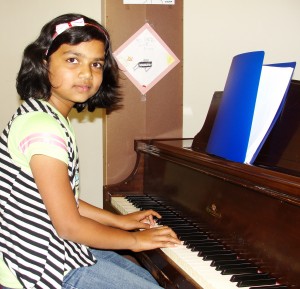 Larysa Yost is proud to represent a world -known Russian piano school. She enjoys teaching music to students of all ages and levels.Recently, she has decided to accept three-year-olds accompanied by their parents in her piano class. She started her way in pedagogy in Ukraine in 1973, after she had got her bachelor’s degree in teaching piano. She is after intensive, challenging methodologies, which help students to discover their potentials in the fastest way possible. Some of her students, who have taken lessons from different teachers, say that Larysa somehow makes “it” easy and enjoyable. Larysa believes in cooperation among parents, teachers and students and encourages whole families to enroll in classes.
Larysa Yost is proud to represent a world -known Russian piano school. She enjoys teaching music to students of all ages and levels.Recently, she has decided to accept three-year-olds accompanied by their parents in her piano class. She started her way in pedagogy in Ukraine in 1973, after she had got her bachelor’s degree in teaching piano. She is after intensive, challenging methodologies, which help students to discover their potentials in the fastest way possible. Some of her students, who have taken lessons from different teachers, say that Larysa somehow makes “it” easy and enjoyable. Larysa believes in cooperation among parents, teachers and students and encourages whole families to enroll in classes.
Larysa is sharing:
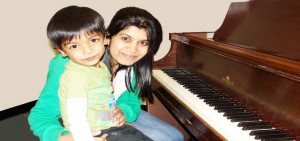 “I’d like to share the ideas and feelings I get every time when I teach NOT only children but everybody in a Family. It’s well known that practically every person comes to study music at least once in life. Many people quit to get enrolled in different activities, as music requires time and tolerance. Some become professional musicians; many want their children to still learn music while limiting the parents’ role to observing the kids’ lessons and pushing them to practicing in a way their own parents did years ago… You say sounds familiar, right? My 38 years of teaching experience and many years of studying music, languages, and age-based psychology, as well as my taking classes in early childhood education, have brought me to understanding that only in case parents are soulfully involved in the children’s studies, those children can really succeed.”
“I’d like to share the ideas and feelings I get every time when I teach NOT only children but everybody in a Family. It’s well known that practically every person comes to study music at least once in life. Many people quit to get enrolled in different activities, as music requires time and tolerance. Some become professional musicians; many want their children to still learn music while limiting the parents’ role to observing the kids’ lessons and pushing them to practicing in a way their own parents did years ago… You say sounds familiar, right? My 38 years of teaching experience and many years of studying music, languages, and age-based psychology, as well as my taking classes in early childhood education, have brought me to understanding that only in case parents are soulfully involved in the children’s studies, those children can really succeed.”
Group Piano Lessons with Larysa
I believe that absolutely every person wants to play music. Those who left their music classes in the childhood, tend to return later, when they have their own children. I’ve found a way to satisfy the needs of many people by providing them with group piano lessons. I always teach a group, not several individuals. Rarely, if ever, I need to use headphones. If I notice one student making mistakes, I stop the group and have everyone play slowly the “difficult” section several times as a group. That way, everyone benefits for the entire class period. My students have class recitals during the last lesson before the Christmas holidays and the last lesson before the summer holidays. They play in ensemble and use their sheet music. The atmosphere of such a recital is casual.
Students learn to do what is expected without always experiencing a “reward”.
I divide my 45- minute piano class time into four periods: “old music” time (hear last week’s music assignment); new music time (teach this week’s music assignment); theory game time (teach new concepts and review previously learned concepts); an application level where the students play the new music using the theory concepts just learned.The students come to piano lessons prepared and ready to learn more! There’s a real team spirit, and friendships can develop. The students also learn from each other and become great accompanists since they are so used to playing with a group.The students are grouped according to their level of piano proficiency: beginning level, advanced beginning level, intermediate piano, and advanced piano.
During our lesson time, the students learn how to use their voices and sing the melodies and harmonies, which enriches their learning experiences and speeds up a process of their development as musicians.
Guitar Class
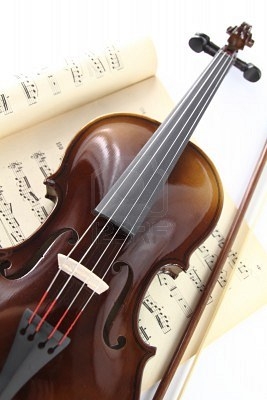 Violin Class
Violin Class
Our violin teacher has more than ten years of experience teaching private, group, and ensemble classes to students of all ages and skill levels. He has 20 years of experience playing the violin in all facets of the music community from symphony, band and chamber music, to charity and public venue performances. As a teacher, he values both the efficient advancement of his students’ technique and musicality, as well as their love and understanding of the beauty of music.
Dance Class
 Our dance teacher has been dancing professionally for over 20 years and teaching dance and fitness for almost 10 years to various age groups. For more than five years, she has taught creative movement to very young children, age 2 and up. Certified as a dance instructor and choreographer by the Institute of Cultural Programs, St. Petersburg, Russia, our talented teacher has been trained in ballet, Russian folk, street dance, ballroom, jazz, hip hop, contemporary dance, lyrical dance, and contact improvisation. Her latest passion is Latin-American social dances, such as salsa, bachata, meringue, and cha cha.
Our dance teacher has been dancing professionally for over 20 years and teaching dance and fitness for almost 10 years to various age groups. For more than five years, she has taught creative movement to very young children, age 2 and up. Certified as a dance instructor and choreographer by the Institute of Cultural Programs, St. Petersburg, Russia, our talented teacher has been trained in ballet, Russian folk, street dance, ballroom, jazz, hip hop, contemporary dance, lyrical dance, and contact improvisation. Her latest passion is Latin-American social dances, such as salsa, bachata, meringue, and cha cha.
Together with her dance ensemble in Russia, she won numerous dance competitions all over Europe and Russia, and in 2000, she was personally recognized as the best solo dancer at the National Dance Competition. She has participated at numerous workshops in the United States, Europe and Russia.
At our School, she offers creative movement and pre-ballet. These classes develop motor skills, coordination, an ear for music and creativity and help increase flexibility and overall fitness. Children discover the joy of dance in a playful atmosphere, express their creativity through movement, and expand their imagination.
Preschool & Pre-K Music Program
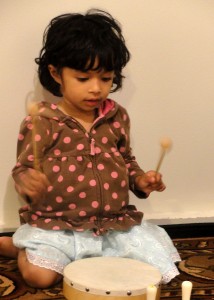 All the children are born with a potential to be musical. Music can lay the foundation for learning and social and emotional success. The children participating in preschool music classes learn about classical, folk, jazz and pop music by listening to the best samples of music and trying their own movements while listening. As we know, young children can only learn when playing, and their educational play is their job and their fun. Most of the songs we teach to sing and role-play are mostly based on the richness of traditional folk music—American, Chinese, Slavic, Spanish, and etc. Creative movement is included wherever it’s possible in our program. We successfully use so-called songbooks.
All the children are born with a potential to be musical. Music can lay the foundation for learning and social and emotional success. The children participating in preschool music classes learn about classical, folk, jazz and pop music by listening to the best samples of music and trying their own movements while listening. As we know, young children can only learn when playing, and their educational play is their job and their fun. Most of the songs we teach to sing and role-play are mostly based on the richness of traditional folk music—American, Chinese, Slavic, Spanish, and etc. Creative movement is included wherever it’s possible in our program. We successfully use so-called songbooks.
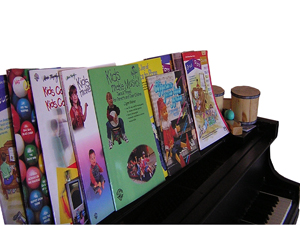 We allow time for free exploration of instrumental music, ribbons, scarves and percussion instruments. Besides well-known percussion instruments ( maracas, finger cymbals, tambourines, different sorts of drums, shaker eggs), we invent our own instruments based on familiar household items. In this way, we show that music can can be found everywhere. While teaching how to listen to music, to dance or move, to sing or to play percussion instruments, we supply those little ones with a huge amount of music theory presented in a simple, playful way, so that they have a chance to memorize note values, time signatures and the pitches by constant repetition of familiar patterns at the age of 2.5-3.
We allow time for free exploration of instrumental music, ribbons, scarves and percussion instruments. Besides well-known percussion instruments ( maracas, finger cymbals, tambourines, different sorts of drums, shaker eggs), we invent our own instruments based on familiar household items. In this way, we show that music can can be found everywhere. While teaching how to listen to music, to dance or move, to sing or to play percussion instruments, we supply those little ones with a huge amount of music theory presented in a simple, playful way, so that they have a chance to memorize note values, time signatures and the pitches by constant repetition of familiar patterns at the age of 2.5-3.
We use tuned metal handbells and magnet boards for learning notation, and the children love to play not only melodies but also harmonies on those bells. At the age of 3-4 they learn how to sight-read music. We introduce the basics of a keyboard and let children play on mini keyboards at the age of 3.
The participation of parents is always encouraged, and they are welcome to observe classes and play together with their children. Parents are guided about how to train their children at home.






